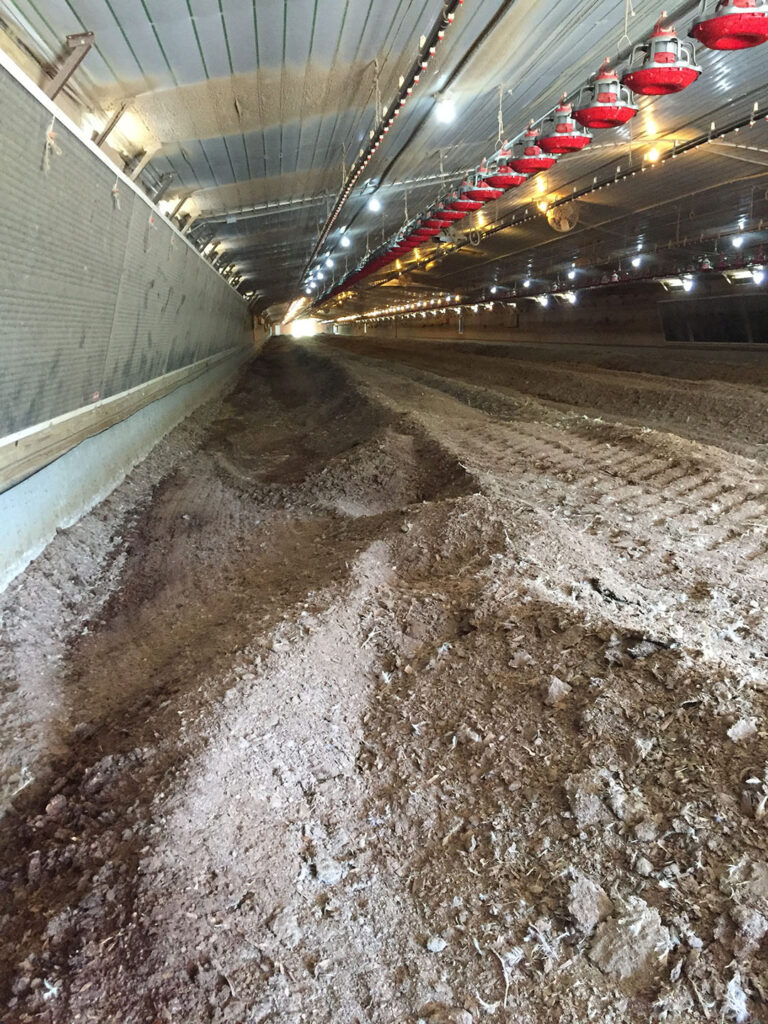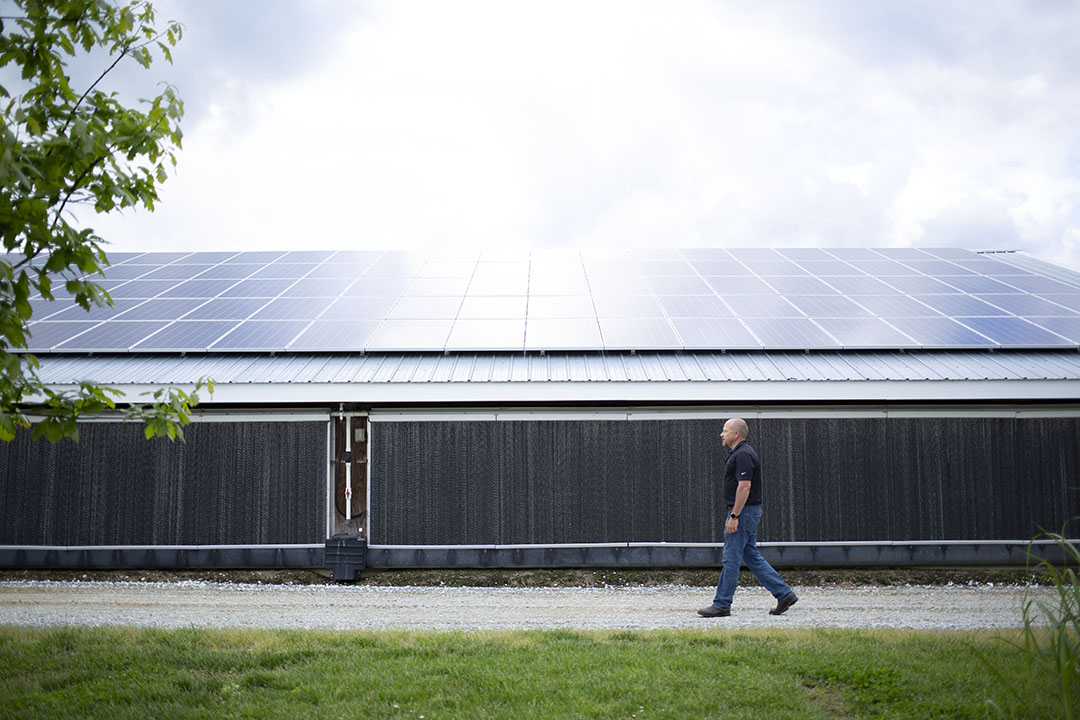US broiler farming sustainability report

The National Chicken Council in the US has released its first Sustainability Report, with progress being made on multiple fronts. However, in areas like Chesapeake Bay, the sustainability of broiler production is still hotly contested.
Following in the footsteps of many other poultry industry associations around the world, the US National Chicken Council (NCC) released its inaugural sustainability report in the second half of 2021. Like other similar documents, it presents a comprehensive overview of the industry’s collective progress on the sustainability fronts of the environment (air, land and water), broiler health and welfare, employee safety and wellbeing, food and consumer safety, and community support and food security.

While this report is similar to sustainability reports from other national poultry associations in other countries, there are also differences. Here we look at some highlights and the background. The development of the 2020 US Broiler Chicken Industry Sustainability Report complements the work of the US Roundtable for Sustainable Poultry & Eggs which is working to ensure the right data is collected to further innovate, drive improvements and support communication about the sustainability of US chicken.
As is the norm, the report includes an updated broiler production system life cycle assessment (LCA) which shows significant improvements in the US chicken industry’s key sustainability intensity metrics between 2010 and 2020.
During that period land use decreased 13% and carbon footprint by 18%, industry-wide. Water consumption dropped by 13%, fossil fuel use by 22% and particulate-forming emissions by 22%. Together with an 86% decline in recorded injuries and sickness over the past 25 years in poultry processing.
The report also includes a few specific notes for 2020. During that year which, of course, saw the introduction of Covid-19 into the world, more than US$ 33 million and 20 million meals were donated to local communities. That year, too, US broiler exports reached a new peak, totalling 7.4 billion pounds (3.36 bt), involving shipments mainly to China, Taiwan and Mexico.
On the farm
Of course, sustainability practices in any country will vary from farm to farm and region to region. It’s explained in the report that at the Arbogast family farm (location not given) over the years, the turkeys were moved into cutting-edge barns and the then-radical practice of no-till was adopted. (In general, tilling farmland causes erosion, requires significant fuel consumption, disturbs soil structure and microbiota, reduces soil moisture retention and releases carbon into the atmosphere.) In the early 2000s, 4 new state-of-the-art chicken barns were built, cover crop use started and solar panels were placed on all the barns.
Tom Super, NCC senior vice president of communications, is not sure how many broiler farms in the US have solar panels or other forms of alternative energy, as this is not tracked. However, he says almost every commercial broiler and broiler breeder farm in the US uses concrete heavy use area pads (HUA pads) at the entrance to each chicken barn. HUA pads allow for easier collection of chicken litter without any elements of it getting lost or spread on the ground. Litter is often composted and applied to fields.

The report recognises the 100-acre farm of Heather and Mike Lewis in Pennsylvania for its land, water and air stewardship, having received a Family Farm Environmental Excellence Award from the US Poultry and Egg Association in 2020. The Lewises windrow or compost chicken litter, leave crop residue on their fields and use cover crops to help improve soil health. During the years they grow corn, they save some of the fodder and grind it up into new bedding for the chickens, and also use recycled pallets for bedding. They also have a nutrient management plan written by an outside agronomist. Super says that alongside HUA use, official nutrient management plans are very common on broiler farms across the US, “especially in areas like the Chesapeake Bay and Mississippi Watershed”.
Chesapeake Bay concerns
However, chicken farming is still coming under intense fire in the Chesapeake Bay area of the US east coast. The Eastern Shore of the bay is home to 300 million broilers at any given time. As noted by the US Environmental Protection Agency (EPA), it’s the largest estuary in the US and the third-largest in the world. It encompasses the entire District of Columbia, as well as parts of 6 states: Delaware, Maryland, New York, Pennsylvania, Virginia and West Virginia.
Nitrogen and phosphorus contamination from poultry operations is a major concern in terms of runoff from manure. Algae blooms occur, then as the algae die oxygen levels in the surrounding water drop drastically, killing off other forms of life, like fish.

In March 2021, a Maryland state judge took the unprecedented step of ordering regulators to impose limits on air pollution emanating from broiler farms. The judge stated that the Maryland Department of the Environment must regulate the amount of nitrogen released into the air “because some of it falls into waters protected by the federal Clean Water Act, such as the nearby Chesapeake Bay”. And a new report on water quality released in October 2021 by the Environmental Integrity Project environmental group, is also quite damning.
The report’s authors found that between 2017 and 2020, 84% of chicken farms in the area failed water pollution control inspections with 46% of them also failing a second inspection. Only 4% were fined by the state and just 2% of those fines were paid. The Baltimore Sun reported on the response to this report from the region’s Delmarva Chicken Association. The group stated that over the last 25 years, broiler farmers have steadily reduced the volume of nutrients washing into Chesapeake Bay.
“Reports like this one simply attempt to distract from the real, tangible progress farmers have made in protecting water quality,” said spokesperson James Fisher. In the 2020 US Broiler Chicken Industry Sustainability Report, Stephanie Shoemaker (environmental manager at major broiler producer Sanderson Farms) said “a prominent goal of ours over the next 5-10 years will be to identify new methods to renew, reuse, reduce and recycle waste from our wastewater treatment and processing facilities”.
Technology to come
How much new technologies can further improve the sustainability of broiler farming in the US and beyond can only be surmised but hopefully they will provide significant gains. Super believes that most of the technological advances that are coming, or will come, will be applied in processing plants. “At the plant, I think we are going to see more companies utilizing more technology, automation and AI, in areas like deboning, for example, to put less [burden] on workers and help alleviate staffing challenges in a continuous tight labour market.”
In terms of where the most gain can be achieved in sustainability in US chicken production in the next five years, Super points without hesitation to feed. “Feed is the largest input and resource in raising a chicken,” he says. “So, the more we can further improve feed conversion; that is a big area that can make the most gain in US chicken production – producing more chicken with fewer resources.”
Join 31,000+ subscribers
Subscribe to our newsletter to stay updated about all the need-to-know content in the poultry sector, three times a week. Beheer
Beheer











 WP Admin
WP Admin  Bewerk bericht
Bewerk bericht